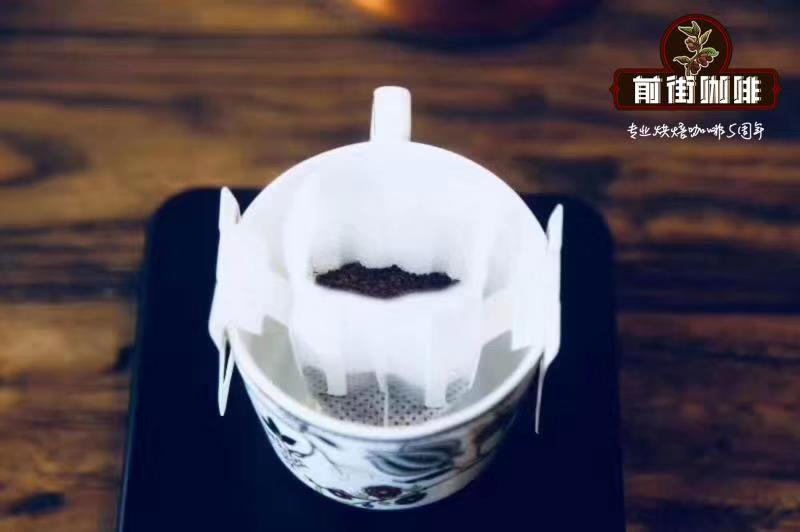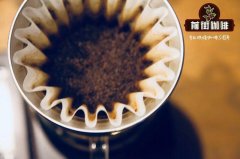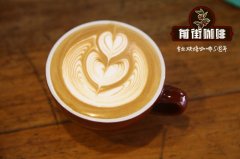What is the reason for over-extraction of hand-brewed coffee | tell you what is the principle of hand-brewed coffee extraction.

Professional coffee knowledge exchange more coffee bean information please follow the coffee workshop (Wechat official account cafe_style)
The core principle of hand-brewed coffee is dissolution and diffusion.
During the roasting process, chemical reactions take place within the coffee cells to produce a variety of components that emit the aroma and flavor of the coffee. As a by-product of these chemical reactions, the gas slowly formed inside the coffee causes the cells to expand. These gases and water are expelled through very small pores inside the cell. These countless pores contain the ingredients that dominate the flavor of coffee formed during baking. To dissolve these ingredients, you must first crush the coffee beans and expose as many pores inside the coffee bean cells to the surface as possible. Then slowly inject water, you can dissolve the ingredients of the coffee, this is the dissolution.
In order to dissolve smoothly, we can consider grinding the coffee powder to the finest so that all the ingredients in the cell can be dissolved. However, if you grind it too fine, it is easy to block the filter paper, so in actual extraction, the coffee powder is only ground to the size of sesame grains. In this way, some cells containing coffee are exposed to the surface, while others are not exposed to the surface. There are also some cells that contain coffee ingredients that cannot be broken by crushing. These cells cannot be extracted by dissolution, and the extraction can only be formed by diffusion.
Put the coffee into a filter cup, fill it with a small amount of water until it is soaked, and the coffee begins to expand. This is because hot water soaks into the coffee cells along the capillaries between the coffee cells formed during baking, pushing the gas out of the cells, causing the coffee to expand.
The water that enters the coffee cell begins to dissolve the coffee ingredients and form a thick coffee solution. Stand still for a while and then inject water into the filter cup again, when there is a concentration difference between the solution formed in the coffee cell and the newly injected water, and the thick coffee solution begins to push the coffee ingredients into the newly injected water. This process is called diffusion.
In this way, in order to dissolve more smoothly and fully form the diffusion caused by the difference in concentration, the process of formal extraction and holding for 30 to 40 seconds after the first injection of water in the coffee cell is called pre-extraction (also known as steaming). In this process, coffee has been fully prepared for extraction.
The secret is that coffee is in even contact with water.
If you look at the roasted coffee beans under a microscope, you will find that there are many small pores. Because of this porous structure, the coffee powder will float on the surface when injected with water.
A close look at the coffee powder floating on the water shows that it has been divided into two layers. The bottom layer because the coffee powder is in full contact with water, resulting in the active dissolution and diffusion of coffee ingredients, but the upper layer is mixed with the gas discharged from the coffee, so the coffee is not in full contact with water. So even if you put in enough coffee powder, some of the coffee ingredients can't be completely dissolved.
In order to fully form dissolution and diffusion, the coffee is filled with water and sometimes stirred in the filter cup with a spoon. Stir with a spoon and mix the layered parts again so that the coffee and water can be fully contacted. If you inject water more carefully, you can stir it without a spoon, and the coffee powder can be in full contact with the water.
It is often heard that water injection should be carefully controlled in order to avoid the collapse of the coffee layer. But as you can see in the picture, no matter how fine the water is injected into the coffee powder floating on the water, the falling water still has an impact on the coffee layer on the surface, causing the coffee to sink to the bottom and then rise to the surface again. Because of this phenomenon, coffee and water can be fully and evenly contacted.
Water injection itself is to fully stir the water and coffee, so as long as the water and coffee can be fully mixed, regardless of the method of water injection, it does not have much effect on the taste of coffee.
END
Important Notice :
前街咖啡 FrontStreet Coffee has moved to new addredd:
FrontStreet Coffee Address: 315,Donghua East Road,GuangZhou
Tel:020 38364473
- Prev

Why is the coffee made by hand bitter? how do you drink coffee by hand?
Professional coffee knowledge exchange more coffee bean information please pay attention to the coffee workshop (Wechat official account cafe_style) error 1: grinding degree there are all kinds of bean grinders on the market, a good bean grinder can ensure that the coffee powder is uniform. If the coffee powder is uneven and the fine powder is too much, it will give way to the coffee produced.
- Next

How to judge whether the coffee brewed by hand is good or not | what is the reason why the coffee made by yourself is not good?
Professional coffee knowledge exchange more coffee bean information please follow the coffee workshop (Wechat official account cafe_style) | Water quality is right, water quality is also a very important factor in coffee extraction, after all, 98% of the coffee is water! So please don't ignore such an important thing! When the TDs value of the water is too high, the minerals in the water are supersaturated.
Related
- Beginners will see the "Coffee pull flower" guide!
- What is the difference between ice blog purified milk and ordinary milk coffee?
- Why is the Philippines the largest producer of crops in Liberia?
- For coffee extraction, should the fine powder be retained?
- How does extracted espresso fill pressed powder? How much strength does it take to press the powder?
- How to make jasmine cold extract coffee? Is the jasmine + latte good?
- Will this little toy really make the coffee taste better? How does Lily Drip affect coffee extraction?
- Will the action of slapping the filter cup also affect coffee extraction?
- What's the difference between powder-to-water ratio and powder-to-liquid ratio?
- What is the Ethiopian local species? What does it have to do with Heirloom native species?

